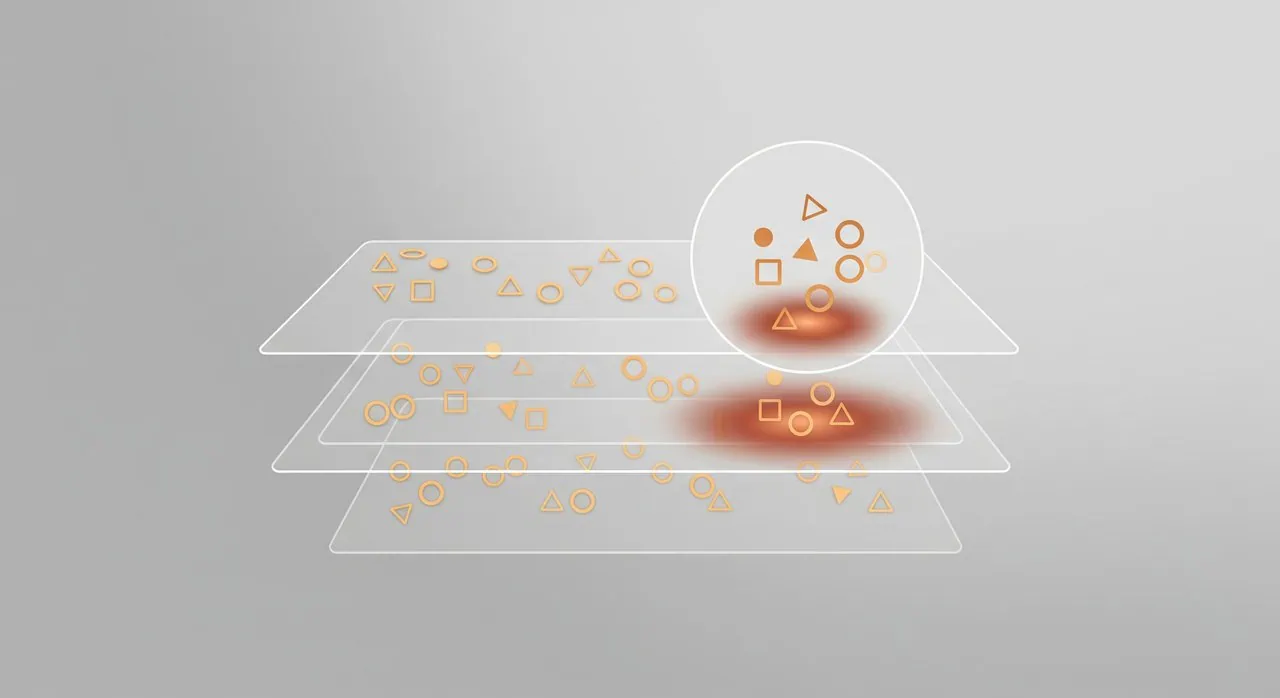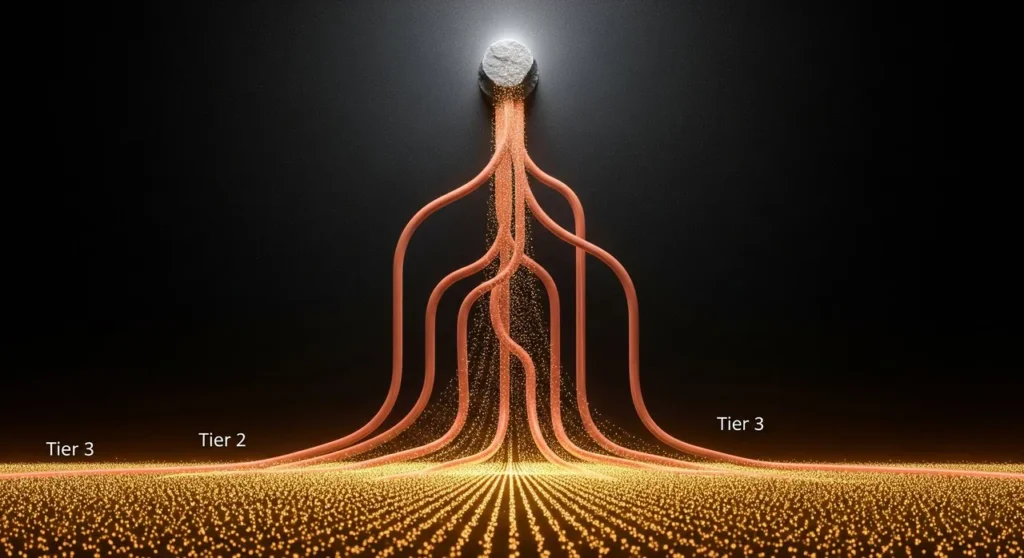Here’s the thing about backlinks: not all of them carry the same weight. You can build hundreds, but if they’re scattered without structure, they won’t cut it. That’s where tiered link building comes in.
It’s a strategy people have used for years, but most still overlook it. You build your links in layers. The links at the bottom strengthen the ones above them, and that power eventually flows to your website. Done right, it gives your main pages more authority without risking penalties from Google.
In this guide, I’ll walk you through what tiered link building actually is, how it works in real campaigns, which backlinks make sense for each tier, and how to set it all up so you see results without wasting time or money.
What is tiered link building strategy
Tiered link building is pretty straightforward. You build links in layers instead of pointing everything straight at your site. First, you have links that go directly to your website – these are your Tier 1 backlinks. Then you build another set of links (Tier 2) that point to those first links, boosting their power. If you want to go further, you can create a third tier that links to your Tier 2 backlinks.
Why bother with all these layers? Because it makes your backlinks stronger without risking penalties. Some SEOs use tiered link building software to handle the second and third tiers because it saves time. But software alone isn’t enough – you still need to choose good links for each tier and keep everything looking natural.
How it works
Instead of sending every link straight to your website, you build them in layers so they support each other.
Here’s how it usually goes:
First, you have Tier 1. These are the links that go directly to your site. You want these to be as strong and clean as possible – things like guest posts on real blogs or good niche edits. They’re the ones that Google will see pointing at your site.
Then comes Tier 2. These links don’t point to your website – they point to your Tier 1 links. Why bother? Because it gives your Tier 1 links more power and helps them get picked up by Google faster. Stuff like Web 2.0 posts, blog comments, or mid-tier edits work well here.
Finally, there’s Tier 3. This is the bottom layer. These links point to your Tier 2 links. People usually build these in bulk using automated tools – things like social bookmarks or profile links. They aren’t powerful on their own, but they help push everything up the chain.
Here’s a quick tiered link building example: Say you write a guest post on a good site (Tier 1) linking to your homepage. Then you create a few Web 2.0 posts (Tier 2) that link to that guest post. To give those Web 2.0 posts a boost, you build some social bookmarks (Tier 3) pointing to them. Each layer feeds the next, and in the end, your site gets more authority without looking spammy.

Best backlinks for each level/tier
If you want tiered link building to work, you need to know what types of links fit each layer. Just throwing random backlinks everywhere doesn’t cut it.
- Tier 1 – Links to your website
This is where you need quality. Think guest posts on real blogs, solid niche edits, or legit directories. These links point right at your site, so they need to be clean and relevant. Don’t cut corners here – Google sees these first.
- Tier 2 – Links to your Tier 1 links
These backlinks give your Tier 1 links more power and help them get indexed. You can use Web 2.0 blogs, blog comments, forum posts, or mid-tier niche edits. They don’t have to be as strong as Tier 1 links, but they still need to be decent. Some people find tiered link building online tools to handle these faster, but it’s still worth checking that the links aren’t spammy.
- Tier 3 – Links to your Tier 2 links
This is the bottom of the stack. Here it’s about volume more than quality. Social bookmarks, profile links, and automated blog comments all fit here. Their job is simple: push some extra juice up to Tier 2, which then powers up Tier 1, and finally boosts your site.
At the end of the day, the right mix of links at each tier makes the whole structure work. If you cheap out at Tier 1 or build garbage tiers below, the results will show it.
How to build

Building tiered links isn’t rocket science, but it does take some thought. Here’s how to do it without wasting time or money.
Start with Tier 1. These are your best links – the ones pointing straight at your website. Think guest posts on real blogs, solid niche edits, or trusted directories. This is where you want quality because these links directly affect your rankings. Don’t cheap out here.
Next is Tier 2. These links point to your Tier 1 backlinks. Their job is to give your main links more power and help them get indexed faster. Web 2.0 blogs, blog comments, or forum posts work well here. They don’t need to be top-tier, but they shouldn’t be total junk either.
Finally, there’s Tier 3. This layer points to your Tier 2 links. It’s mostly about volume – social bookmarks, profile links, or automated blog comments. They won’t move the needle on their own, but they help strengthen the layers above.
Some people use services that offer tier 1 2 3 backlinks to speed things up. That’s fine, but don’t blindly trust automation. Always check what’s being built so you don’t end up with a bunch of spam that hurts your site instead of helping it.
How to track
Don’t overthink it. Here’s what actually works:
- Write it down
Just keep a simple sheet with your links – where they are, which tier, date built. Nothing fancy, but you’ll thank yourself later.
- Check your Tier 1 links
These matter most. Use Ahrefs or SEMrush to see if they’re live and indexed. If they’re down, fix it fast.
- Spot-check Tier 2 and 3
These links power up your main ones. You don’t need to check every single one, but use Scrapebox or LinkChecker to see if most are still live.
- Use indexers if you want
Sometimes it helps Tier 2 and 3 links get picked up quicker. Just don’t use shady indexers that might leave a footprint.
- Look at what matters
Traffic and rankings. That’s the real measure. If you’re not seeing results after a while, don’t keep repeating the same thing – switch it up.
Examples
Here’s a quick look at how tiered link building plays out:
- Example 1:
You publish a guest post on a strong blog linking to your homepage (Tier 1). Then you create a few Web 2.0 posts linking to that guest post (Tier 2). To push them further, you build social bookmarks pointing to those Web 2.0 posts (Tier 3). - Example 2:
You get a niche edit on a relevant site (Tier 1). Next, you write blog comments on related posts linking to that niche edit (Tier 2). Finally, you build a few profile links pointing to those comments (Tier 3).
That’s it. Simple, layered, and effective when done right.
Conclusions
Tiered link building isn’t magic, it’s just a smarter way to build backlinks. By stacking links in layers, you make your main links stronger without risking penalties. Focus on quality at the top, volume at the bottom, and always keep an eye on your results. Done right, it’s one of the most effective ways to boost your site’s authority.
